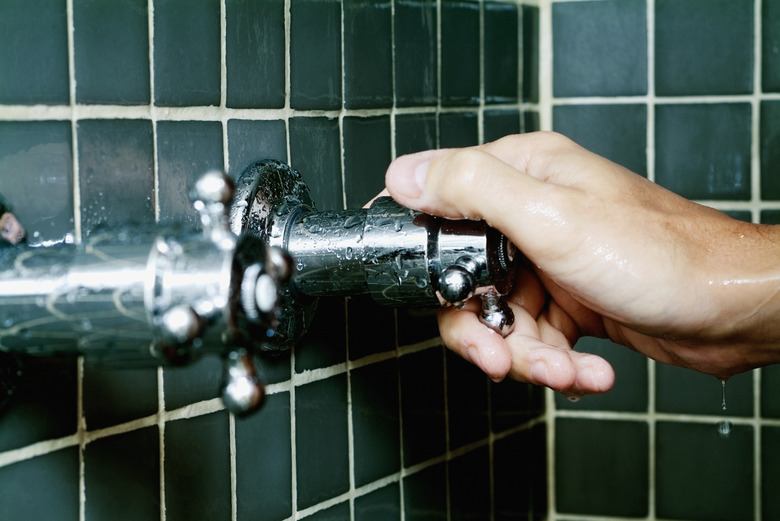What Is The Difference Between A Diverter Valve And A Shower Cartridge?
We may receive a commission on purchases made from links.
Even professional plumbers consult catalogs and manufacturer's literature to sort through the immense variety of shower and tub fixtures. Diverters and cartridges occur in several combinations among conventional shower fixtures.
Adding to the confusion, most components are proprietary and specific to a particular faucet model. Whether you're designing a new bathroom or repairing an existing fixture, an understanding of faucet assemblies prepares you to purchase parts and plan for a successful installation.
Tip
A cartridge represents one type of shower valve system, whereas a diverter blocks water from exiting the tub spout and sends it to the showerhead instead. Some shower faucets use cartridges that can also divert water.
About Shower Diverter Valves
About Shower Diverter Valves
Diverter valves are essential components in tub and shower combination fixtures. As the name suggests, diverters divert water between the fixture's tub spout and showerhead. The most familiar type of shower diverter is a rod that slides in and out of the tub spout's top surface.
Pulling the rod up while the water is running blocks the flow of water through the tub spout and redirects the water to the showerhead. The rod attaches to a plastic "gate" and a rubber washer to block and seal the normal exit for the water. With no where else to go, the incoming water pressure will send the water up the pipe leader to the shower faucet.
About Shower Cartridges
About Shower Cartridges
Cartridges comprise an advanced type of faucet-stem valve assembly. Conventional shower stem valves consist of a metal body concealed behind the shower stall's wall. Turning a conventional stem valve's handle causes a rubber washer to compress against, or release from, a hole that supplies water to a spout or showerhead. Faucet cartridges replace the metal stems with a lightweight plastic body that turns smoothly and doesn't require excessive turning to close.
Cartridge shower faucet assemblies might consist of one or two handles. A single-handle cartridge faucet opens and closes water flow with an up and down motion, and regulates temperature with a left or right motion. Dual-handle cartridge faucets resemble conventional stem faucets in appearance and operation, but they're easier to turn and less subject to rust and mineral buildup.
Shower Diverter Cartridges
Shower Diverter Cartridges
Some shower diverters contain a cartridge. Diverters with cartridges are sometimes part of a triple-handle shower and tub assembly or part of single-handle shower and tub faucet assembly.
In the triple-handle assembly, the diverter sits between a hot and cold faucet handle. In this arrangement, turning the diverter's handle causes its cartridge to open or close a supply line that diverts water between the spout and showerhead. Single-handle assemblies contain complex ball or disc cartridges that allow one handle to simultaneously divert water, control flow and regulate temperature.
Shower and Tub Faucet Terminology
Shower and Tub Faucet Terminology
Although diverters frequently contain cartridges, plumbers and do-it-yourselfers often use the terms "diverter" and "cartridge" as if they refer to distinct faucet-assembly components. In context, they're usually using the word cartridge to refer to the shower's faucet handles and the word diverter to refer to a diverter with any type of valve assembly, including a cartridge. To keep things sorted out, remember that cartridges aren't synonymous with either diverters or faucet handles; they're simply one of many valve-stem types.
